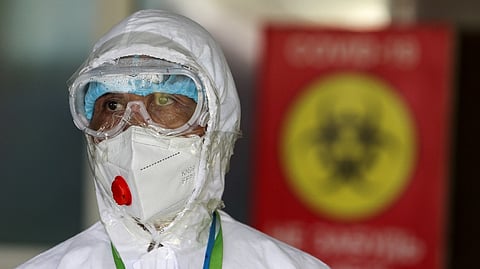

KNVUL SHEIKH AND PAM BELLUCK
CHENNAI: Among the many confounding aspects of the coronavirus is the spectrum of possible symptoms, as well as their severity and duration. Some people develop mild illness and recover quickly, with no lasting effects. But studies estimate that 10 to 30 percent of people report persistent or new medical issues months after their initial coronavirus infections — a constellation of symptoms known as long COVID. People who experience mild or moderate illness, as well as those without any underlying medical conditions, can nonetheless experience some debilitating long-term symptoms, including fatigue, shortness of breath, an erratic heart rate, headaches, dizziness, depression and problems with memory and concentration. Such lingering medical issues are so varied that one study by a patient-led research group evaluated 203 symptoms that may fluctuate or even appear out of the blue after people seem to have recovered.
As Dr. Ziyad Al-Aly, the chief of research and development at the VA St. Louis Healthcare System and a clinical epidemiologist at Washington University in St. Louis, said, “If you’ve seen one patient with long COVID, you’ve seen one patient with long COVID.” There is little consensus on the exact definition of long COVID, also known by the medical term PASC, or post-acute sequelae of COVID-19. While the World Health Organization says long COVID starts three months after the original bout of illness or positive test result, the Centers for Disease Control and Prevention sets the timeline at just after one month.
Some researchers and health care providers use other time frames, making efforts to study and quantify the condition more difficult, said Dr. Al-Aly, who has conducted many studies on long-term post-COVID issues. When patients experiencing persistent symptoms go to their doctors, tests like electrocardiograms, chest X-rays, CT scans and blood work don’t always identify physiological problems, Dr. Al-Aly said. Researchers are working to pinpoint certain biological factors, called biomarkers, that correlate with persistent COVID symptoms. These could include signs of inflammation or certain molecules produced by the immune system that might be measured by blood tests, for example. For now, doctors must rely on their patients’ descriptions of symptoms and rule out alternative explanations or causes. Some post-COVID clinics have multidisciplinary teams of specialists evaluate patients to figure out the best treatment options.
It’s unclear what exactly drives long COVID, but research has begun to offer some clues. Some experts theorise an immune response that goes into overdrive when you first get sick may lead to inflammation and damage throughout the body, eventually resulting in long COVID symptoms, said Dr. Michael Peluso, an infectious disease physician at the University of California. “We know that during acute COVID-19, some people have a really revved-up immune response and some people have a reduced immune response, and that response can determine the trajectory of how well somebody does,” he said. Research offers hints about which patients might face a greater risk of long-term symptoms. In a study of 209 patients published in January, researchers found four factors that could be identified early in a person’s coronavirus infection that appeared to correlate with an increased risk of having ongoing symptoms two to three months later.
One factor was the level of coronavirus RNA in the blood early in the infection, an indicator of viral load. Another was the presence of auto-antibodies — antibodies that mistakenly attack tissues in the body as they do in conditions like lupus and rheumatoid arthritis. A third factor was the reactivation of Epstein-Barr virus, which can cause mononucleosis and infects most people, often when they are young, and then usually becomes dormant. The fourth factor was having Type 2 diabetes, although experts say that in studies involving larger numbers of patients, diabetes might be only one of several medical conditions that increase the risk of long COVID.
Visit news.dtnext.in to explore our interactive epaper!
Download the DT Next app for more exciting features!
Click here for iOS
Click here for Android